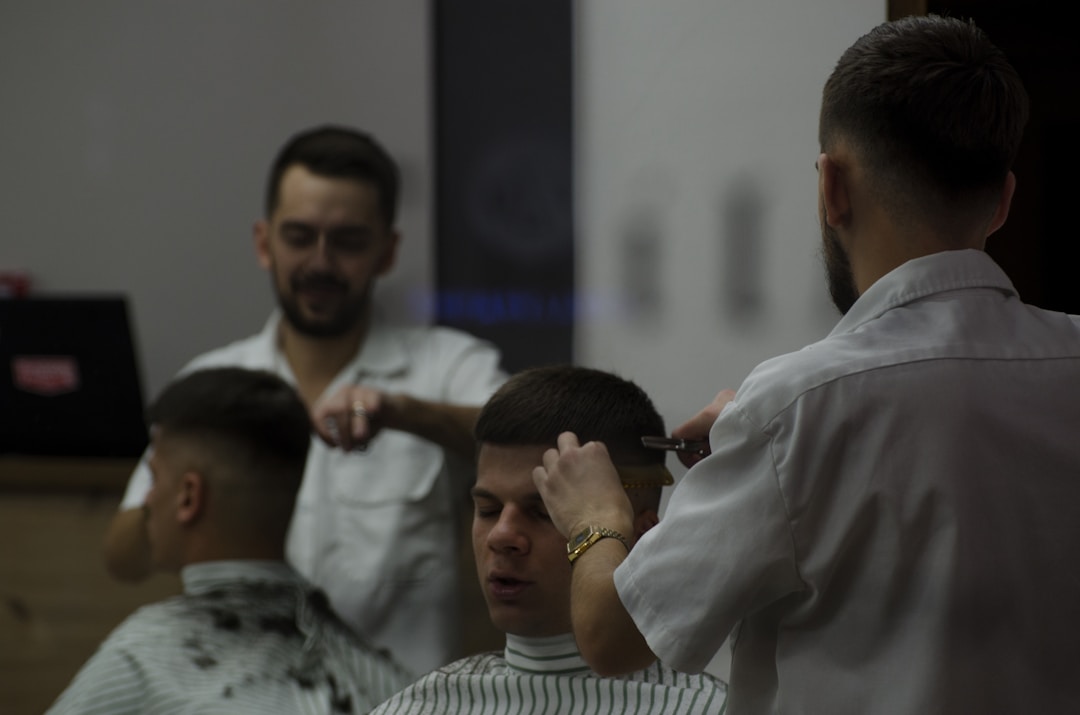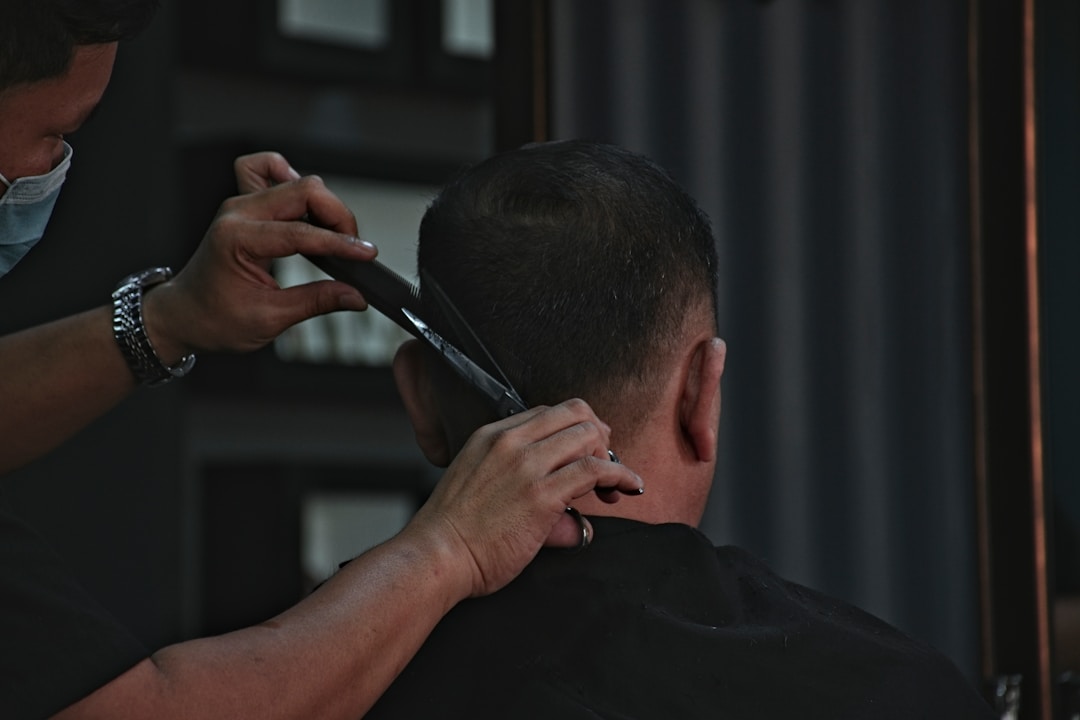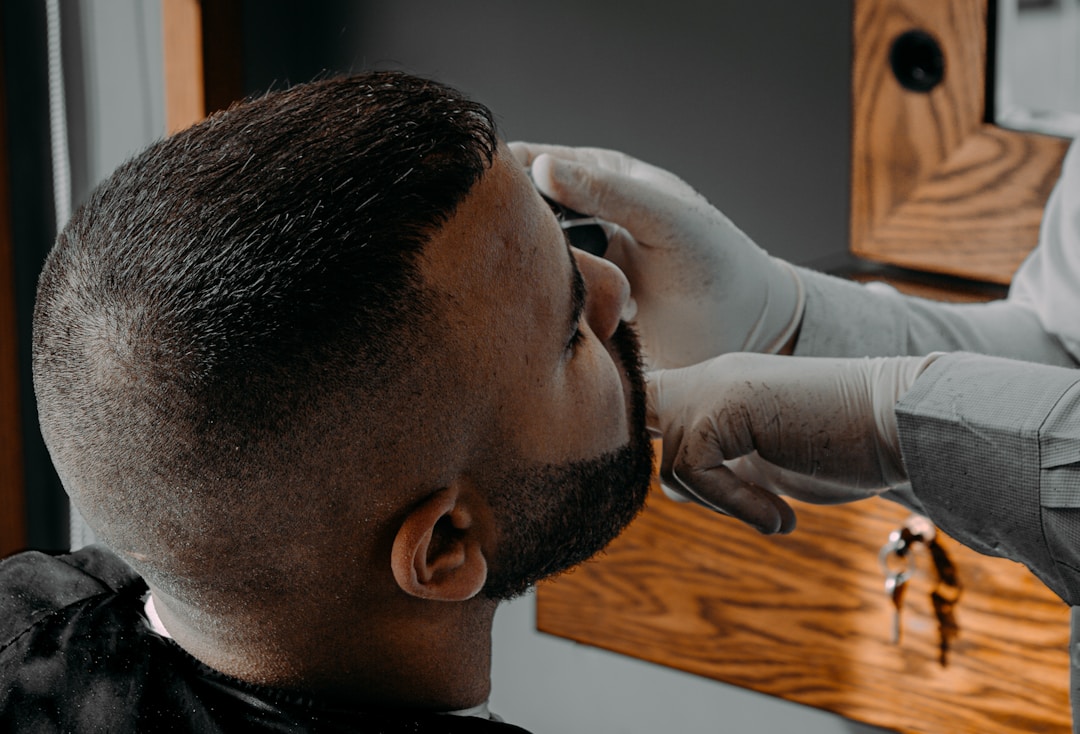Precision Haircut Expert Techniques
Master precision haircut techniques at DIDA NYC Hair Studio Queens. Expert cutting methods, detailed barbering, and professional styling excellence.

Expert precision haircutting techniques showcasing mathematical accuracy and artistic vision at DIDA NYC Hair Studio
The Art of Precision Haircutting
Precision haircutting represents the highest level of barbering craftsmanship, where every cut, angle, and measurement is executed with mathematical accuracy and artistic vision. At DIDA NYC Hair Studio in Queens, we have dedicated over two decades to perfecting these expert techniques, serving discerning clients throughout Rego Park, Forest Hills, and the greater Queens area who demand nothing less than perfection in their grooming.
True precision cutting goes beyond simply following a pattern or template - it requires deep understanding of hair behavior, facial structure, growth patterns, and the subtle nuances that transform a good haircut into an exceptional one. Our master barbers combine technical experience with artistic intuition to create cuts that not only look perfect on the day of service but continue to grow out beautifully.
Foundations of Precision Cutting
Advanced Precision Cutting Techniques

Advanced precision cutting techniques showcasing professional barbering mastery and detailed hair cutting methods
Mastering precision haircuts requires proficiency in numerous advanced techniques, each designed to achieve specific results while maintaining the exacting standards that define precision work. These methods have been refined through decades of practice and continuous learning.
Geometric Sectioning Methods
Systematic Parting Techniques
- Radial Sectioning: Circular divisions from crown for balanced cutting
- Parallel Sectioning: Consistent horizontal sections for even lengths
- Diagonal Sectioning: Angled divisions for graduated effects
- Triangular Sectioning: Pointed sections for specific design elements
- Custom Sectioning: Adapted patterns for unique head shapes
Measurement and Mapping
- Head Mapping: Identifying key reference points and proportions
- Length Calculation: Precise measurement systems for consistency
- Angle Determination: Mathematical approach to cutting angles
- Growth Pattern Analysis: Understanding natural hair flow directions
Professional Cutting Techniques
Point Cutting Mastery
- Texture Creation: Strategic point cutting for natural movement
- Edge Softening: Eliminating harsh lines through precise point work
- Weight Removal: Reducing bulk while maintaining length
- Layering Integration: Seamless blending between length variations
Slide Cutting Techniques
- Smooth Transitions: Creating gradual length changes
- Texture Enhancement: Adding movement without removing length
- Volume Control: Managing density in specific areas
- Natural Finish: Achieving organic-looking results
- Japanese Steel Scissors: Superior metallurgy for precise cutting
- Texturizing Shears: Specialized tools for internal texturing
- Precision Razors: Sharp blades for ultra-fine detail work
- Professional Combs: Multiple spacing options for accurate sectioning
- Measuring Tools: Rulers and guides for mathematical precision
- Leveling Systems: Ensuring perfect symmetry and balance
Precision Fade and Taper Techniques

Precision fade and taper techniques demonstrating mathematical precision and seamless blending experience
Precision fades and tapers represent some of the most technically demanding cuts in barbering, requiring exceptional skill to create seamless transitions that appear effortless while being mathematically precise in their execution.
Mathematical Fade Construction
Gradient Calculation
- Transition Mapping: Planning the exact progression from long to short
- Guard Progression: Calculated sequence of clipper lengths
- Blending Zones: Specific areas where length transitions occur
- Symmetry Maintenance: Ensuring perfect balance between sides
Technical Execution
- Lever Techniques: Micro-adjustments for smooth transitions
- Overlapping Methods: Seamless blending between guard lengths
- Scissor-Over-Comb: Hand-finishing for ultimate precision
- Detail Refinement: Final touches for flawless results
Precision Taper Methods
Natural Taper Construction
- Gradual Reduction: Smooth length transitions without harsh lines
- Neckline Precision: Perfect edge definition and symmetry
- Sideburn Integration: Seamless connection to facial hair
- Temple Blending: Careful attention to delicate areas
Facial Structure Analysis for Precision Cuts
Precision haircutting requires thorough analysis of facial structure, head shape, and individual characteristics to ensure the cut enhances natural features while correcting any proportional imbalances. This analytical approach is fundamental to achieving truly exceptional results.
Complete Face Shape Assessment
Geometric Analysis
- Facial Proportions: Measuring length-to-width ratios
- Feature Placement: Analyzing forehead, cheekbones, and jawline
- Asymmetry Identification: Noting subtle differences between sides
- Profile Assessment: Considering side view proportions
Customization Strategies
- Enhancement Techniques: Emphasizing attractive features
- Correction Methods: Minimizing less favorable aspects
- Balance Creation: Achieving overall harmony and proportion
- Individual Adaptation: Tailoring cuts to unique characteristics
Hair Characteristics Analysis
Texture Assessment
- Strand Thickness: Individual hair diameter analysis
- Density Evaluation: Number of hairs per square inch
- Natural Curl Pattern: Understanding wave and curl tendencies
- Growth Direction: Identifying cowlicks and growth patterns
Behavior Prediction
- Growth Rate: Estimating how the cut will evolve over time
- Styling Potential: Determining achievable styles and finishes
- Maintenance Requirements: Predicting upkeep needs
- Product Response: Understanding how hair reacts to styling products
- Complete Consultation: Detailed analysis and goal setting
- Technical Planning: Systematic approach design
- Precision Execution: Expert technique application
- Quality Control: Meticulous checking and refinement
- Styling Education: Client guidance for home maintenance
- Progress Monitoring: Follow-up for optimal results
Precision Layering and Texturing
Advanced layering and texturing techniques require precise control and deep understanding of how hair behaves at different lengths and angles. These methods create movement, body, and style while maintaining the structural integrity that defines precision work.
Structured Layering Systems
Elevation Control
- 90-Degree Layering: Maximum movement and volume creation
- 45-Degree Layering: Gradual movement with weight retention
- Zero-Degree Cutting: Solid foundation and maximum weight
- Variable Elevation: Custom angles for specific effects
Layer Distribution
- Uniform Layering: Consistent length progression throughout
- Graduated Layering: Strategic weight placement and removal
- Disconnected Layers: Intentional length gaps for modern effects
- Blended Integration: Seamless transitions between layer levels
Advanced Texturing Methods
Internal Texturing
- Thinning Techniques: Reducing bulk without affecting external appearance
- Channel Cutting: Creating internal pathways for movement
- Notching Methods: Strategic removal for enhanced texture
- Undercutting: Hidden length removal for shape control
Quality Control and Precision Standards
Maintaining precision standards requires systematic quality control processes and adherence to exacting benchmarks. Every precision cut must meet specific criteria before being considered complete.
Technical Quality Checkpoints
Symmetry Verification
- Mirror Image Testing: Comparing left and right sides
- Length Consistency: Verifying uniform measurements
- Line Continuity: Ensuring smooth, unbroken transitions
- Proportion Balance: Confirming overall harmony
Finish Quality Assessment
- Edge Definition: Clean, precise perimeter lines
- Texture Distribution: Even movement and body throughout
- Growth Pattern Integration: Working with natural tendencies
- Styling Potential: Versatility and manageability verification
Professional Standards Maintenance
- Continuous Education: Staying current with advanced techniques
- Tool Maintenance: Keeping instruments in perfect condition
- Skill Refinement: Regular practice and technique development
- Client Feedback: Incorporating response for improvement
Precision Cutting for Different Hair Types
Different hair textures and types require modified precision techniques to achieve optimal results. Understanding these variations is important for delivering consistent excellence across all hair characteristics.
Straight Hair Precision Techniques
- Clean Line Emphasis: Taking advantage of natural straightness
- Weight Management: Strategic removal to prevent overwhelming
- Movement Creation: Adding texture without disrupting structure
- Precision Maintenance: Techniques that grow out gracefully
Wavy Hair Adaptations
- Wave Pattern Analysis: Understanding natural curl formation
- Length Variations: Accounting for wave compression
- Texture Enhancement: Working with natural movement
- Frizz Prevention: Techniques that minimize unwanted texture
Curly Hair Precision Methods
- Curl Structure Respect: Cutting with natural curl patterns
- Stretch Technique: Cutting at natural length extension
- Layer Positioning: Strategic placement for curl enhancement
- Shrinkage Compensation: Accounting for curl contraction
- Master barbers with 20+ years precision cutting experience
- Advanced training in mathematical cutting techniques
- State-of-the-art tools and equipment for precision work
- Customized approach for every hair type and face shape
- Serving Queens' most discerning clients since 2003
- Continuing education in latest precision methods
Precision Cutting Aftercare and Maintenance
A precision haircut is an investment that requires proper care and maintenance to preserve its exceptional qualities. Understanding how to care for precision work ensures lasting results and maximum value from your professional service.
Home Care for Precision Cuts
Daily Maintenance
- Gentle Handling: Careful brushing and styling techniques
- Product Selection: Using appropriate styling aids
- Heat Protection: Safeguarding against styling damage
- Overnight Care: Preserving style while sleeping
Professional Maintenance Schedule
- Regular Touch-ups: Scheduled appointments for optimal appearance
- Growth Management: Strategic trimming to maintain shape
- Style Evolution: Adapting cuts as hair grows
- Seasonal Adjustments: Modifications for different times of year
Long-term Precision Care
- Growth Planning: Anticipating how cuts will evolve
- Style Adaptation: Modifying techniques as needs change
- Health Maintenance: Keeping hair in optimal condition
- Professional Partnership: Building long-term stylist relationships
Precision Cutting Technique Comparison
Different precision cutting techniques serve specific purposes and produce distinct results. Understanding these variations helps in selecting the right approach for your hair type and desired style.
| Technique | Best For | Time Required | Maintenance |
|---|---|---|---|
| Point Cutting | Adding texture and softening edges | 30-45 min | 4-6 weeks |
| Slide Cutting | Creating smooth transitions and removing bulk | 40-60 min | 5-7 weeks |
| Geometric Sectioning | Complex styles requiring perfect symmetry | 60-90 min | 4-5 weeks |
| Precision Fade | Clean, graduated looks with seamless blending | 45-75 min | 2-3 weeks |
Precision Cut Maintenance Timeline
Maintaining a precision haircut requires a structured schedule to preserve its exceptional qualities. Follow this timeline to keep your cut looking sharp and professionally styled at all times.
Week 1-2: Peak Perfection
- • Cut looks exactly as styled in salon
- • Minimal daily maintenance required
- • Perfect symmetry and clean lines maintained
- • Action: Follow home styling instructions precisely
Week 3-4: Prime Condition
- • Cut has settled into natural shape
- • Style remains professional and polished
- • Minor edge softening may be visible
- • Action: Continue regular styling routine, consider edge touch-up
Week 5-6: Touch-up Window
- • Natural growth affects precision details
- • Fades show visible regrowth
- • Style may require more daily effort
- • Action: Schedule professional touch-up to restore precision
Week 7+: Redesign Recommended
- • Original precision structure significantly altered
- • Cut requires reworking to restore quality
- • Growth may create styling challenges
- • Action: Book full precision cut to reestablish perfect structure
Recommended Products for Precision Cuts
Maintaining a precision haircut at home requires the right products. Our expert barbers recommend these specific items to preserve the exceptional quality of your precision cut between salon visits.
High-Hold Matte Pomade
Purpose: Maintains sharp lines and structure all day
Application: Work through damp hair, style into place immediately
Why Essential: Preserves the geometric precision of mathematically cut styles
Professional Finishing Spray
Purpose: Locks in style without stiffness
Application: Mist from 8-10 inches after styling complete
Why Essential: Prevents humidity and movement from disrupting precision structure
Sea Salt Texturizing Spray
Creates natural movement while maintaining precision structure. Apply to towel-dried hair for effortless texture that respects the cut's architecture.
Lightweight Styling Clay
Provides flexible hold for textured precision styles. Allows restyling throughout the day while preserving the fundamental cut structure.
Leave-In Conditioner
Maintains hair health without weighing down precision texture. Essential for keeping textured cuts looking their best between appointments.
Frequently Asked Questions About Precision Haircuts
Experience the ultimate in precision haircutting at DIDA NYC Hair Studio in Queens. Our master barbers combine mathematical accuracy with artistic vision to create cuts that represent the highest level of barbering craftsmanship. Discover why precision cutting is considered the gold standard of professional grooming.
Ready for Precision Cutting Excellence?
Experience the difference that true precision makes. Book your expert haircut at DIDA NYC Hair Studioand discover why precision cutting is the foundation of exceptional grooming. Visit Elmhurst, Forest Hills, or browse all services.